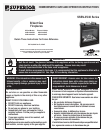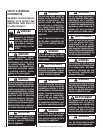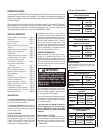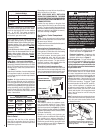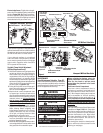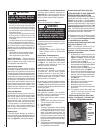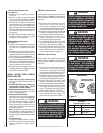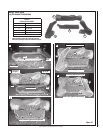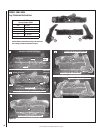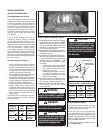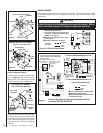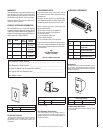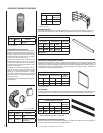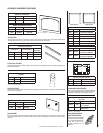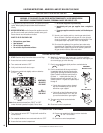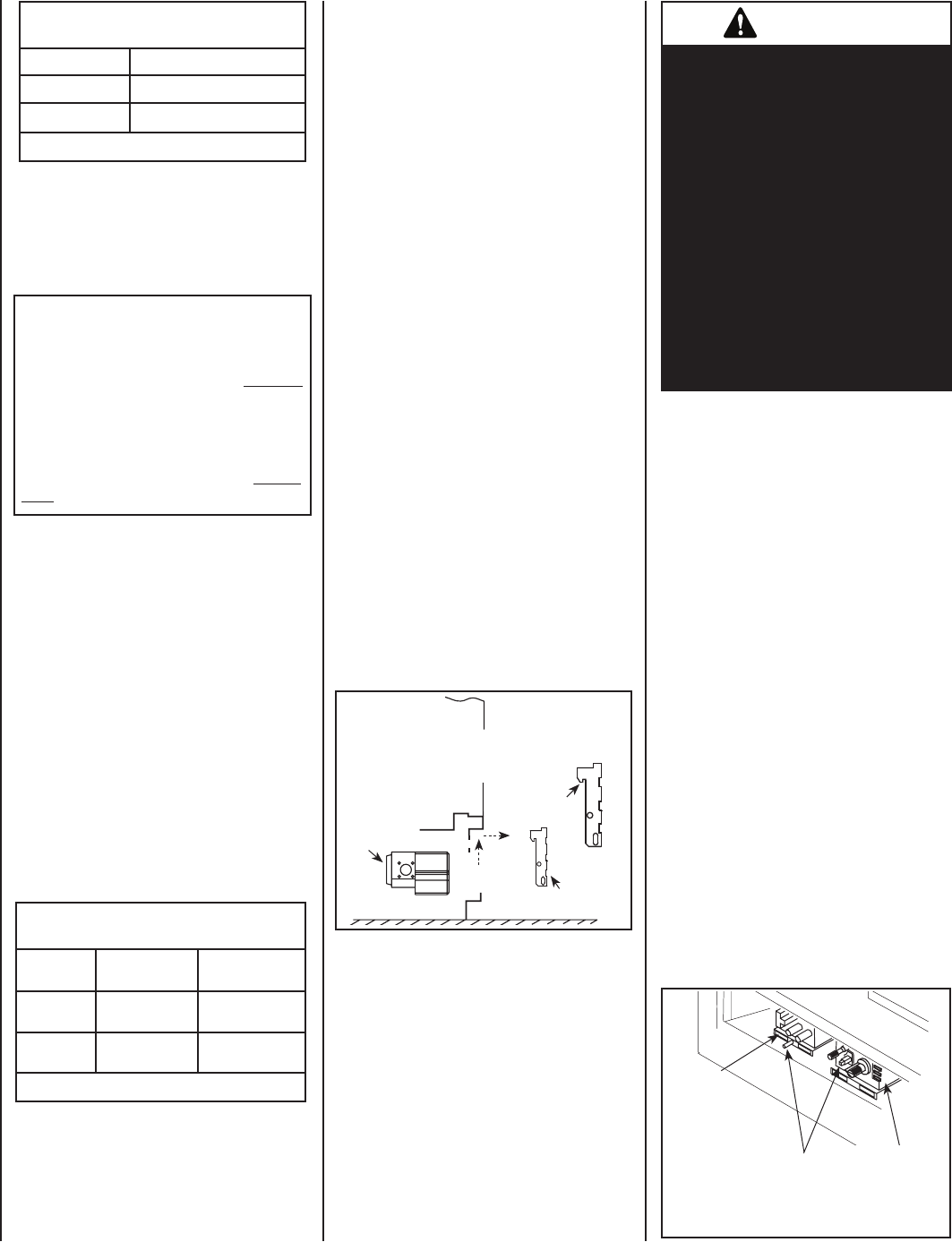
4
Depending on your use, the burn-in period may
take a few hours or a few days.
KEEP YOUR HOUSE WELL VENTILATED
DURING THE CURING PROCESS. THE ODOR
AND HAZE EMITTED BY THE CURING PROCESS
CAN BE QUITE NOTICEABLE AND MAY SET OFF
A SMOKE DETECTOR.
A white film may develop on the glass front
during the first few fires as part of the curing
process. The glass should be kept clean during
the first two weeks of use to prevent the film from
baking on (making it very difficult to remove).
See
Glass Cleaning on Page 5.
Gas Controls / Control Compartment
Access
NOTE: The top louvered panel and the bottom
louvered control panel door remove and install
the same way as follows:
The gas controls can be found behind the control
compartment access door.
Removing Control Compartment Door:
Open the door by gently liftint it upward until the
hook catches on boths sides clear the locating
slots. Then pull door out to remove.
On millivolt systems, the piezo igniter, HI/LO
flame adjustment knob, and pilot and main
gas OFF/ON control knob are located below
the glass panel enclosure. The gas valve for
electronic systems is also located below the
glass enclosure panel. See Figure 1.
Reinstalling Control Compartment Door:
To reinstall, insert the hook catches on each side
of the door into the corresponding slots in the
control compartment opening, then gently push
forward and side down until it locks in place.
Manifold Gas Supply Pressure
(electronic models)
Fuel # Fixed
Natural Gas 3.5" WC (.87 kPa)
Propane 10.0" WC (2.49 kPa)
Table 6
These appliances and their individual shut-off
valves
must be disconnected from the gas
supply piping system during any pressure
testing of that system at pressures
greater
than 1/2 psig (3.5 kPa).
These appliances must be isolated from the
gas supply piping system (
by closing their
individual manual shut-off valve) during any
pressure testing of the gas supply piping
system at test pressures equal to or
less than
1/2 psig (3.5 kPa).
Orifice Sizes - Sea Level to High Altitude
(All Models): These appliances are tested and
approved for installations at elevations of 0-4500
feet (0-1372 meters) above sea level using the
standard burner orifice sizes (marked with an
"*" in Table 7 ).
At the time of installation, it must be determined
if the appliance needs to be derated. Contact
your local gas supplier for deration requirements
for your area.
Deration - At higher elevations, the amount of
BTU fuel value delivered must be reduced by
either using gas that has been derated by the gas
company or by changing the burner orifice to a
smaller size as regulated by the local authorities
having jurisdiction and by the (USA) National
Fuel Gas Code NFPA 54 / ANSI Z223.1 - latest
edition or, in Canada, the CAN1-B149.1 and .2
codes - latest edition.
Test gauge connections are provided on the
front of the millivolt gas control valve, identi
-
fied IN for the inlet and OUT for the manifold
side. A 1/8" NPT Test gauge connection
is provided at the inlet and outlet side of
the electronic gas control valve.
Burner Orifice Sizes
Elevation 0-4500 feet ( 0-1372 meters)
Model
Series
Nat.Gas
drill size (inches)
Propane
drill size (inches)
SSBV-3530
2.3 mm
(.090")
*
37L70 •
#54 (.055")
*
99K79 •
SSBV-4035
#36
(.1065")
*
18L40 •
#52
(.0635")
*
37G00 •
Table 7
Figure 1
OPENING CONTROL
COMPARTMENT DOOR
Control Valve
Lower Control
Compartment Door
Lift the Lower Control
Compartment Door
up and pull out to
remove.
Up
Out
Hook Catch
Millivolt Appliances - Appliances with
Millivolt systems will be fitted with the gas
control valve shown in Figures 4 or 5.
Electronic Appliances - Appliances with
electronic systems will be fitted with the
electronic valve shown in Figure 3.
Millivolt Appliances - To light millivolt appli-
ances refer to the detailed lighting instructions
found on Pages 16 & 17 .
Millivolt appliance
lighting instructions may also be found on the
pull out lighting instruction labels attached to
the gas control valve.
Millivolt appliances can be fitted with an optional
OFF/ON Rocker Switch to be located behind
the control compartment access door, below
the appliance front glass enclosure panel (see
Figures 1 & 2 for location and Page 13 for
ordering information). Once the pilot is lit, the
OFF/ON rocker switch will control the appliance
OFF/ON burner operation. To operate: Toggle
the switch between its ON and OFF positions.
If your millivolt appliance is equipped with
an optional remote switch kit instead of an
optional rocker switch (wall switch or remote
control) and the pilot is lit, the appliance main
burner may be turned on and off using the
optional switch.
Note: To prevent excessive resistance in burner
circuit (which can cause burner operation prob
-
lems), only one burner control switch should
be wired to the valve.
Figure 2
SIT & Honeywell millivolt gas valve showing piezo
igniter location (each unit is equipped with only one
of these gas valves)
SIT Gas
Valve
Shown with control
compartment door
removed
Piezo Igniter
WARNING
B-Vent appliances are not designed
to operate in negatively pressured
environments (pressure within the
home is less than pressures outside).
Significant negatively pressured
environments caused by weather,
home design, or other devices may
impact the operation of these appli-
ances. Negative pressures may result
in poor flame appearance, sooting,
damage to property and/or severe
personal injury. Do not operate these
appliances in negatively pressured
environments. Providing adequate
ventilation to the appliance for com-
bustion air will eliminate a negative
pressure environment.
OPERATION AND CARE OF YOUR
APPLIANCE
The standard controls for appliance opera-
tion are located behind the lower control
compartmetn door below the appliance front
glass enclosure panel (see Figure 1). Optional
control switches are also available (see Pages
13 & 14 -
Remote Wall Switch, Remote Control
or Rocker Switch Kits).
Operation of millivolt and electronic gas
control systems are different. Before lighting
and operating your appliance determine if
you have a millivolt or electronic appliance.
Familiarize yourself with the gas control valve
that your appliance uses. Refer to Figure 1 for
access to the gas control valve.
* Standard size installed at factory
• Part /Cat. Number
Burn-in Period
During the first few fires of this appliance
there will be some odor due to the curing of
paint and burning off of lubricants used in the
manufacturing process.
Honeywell
Gas Valve



